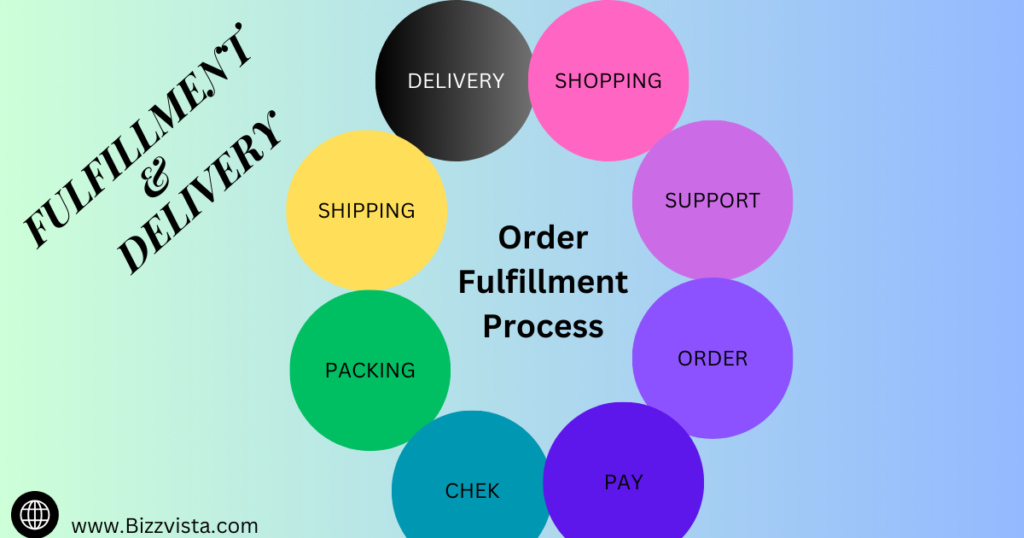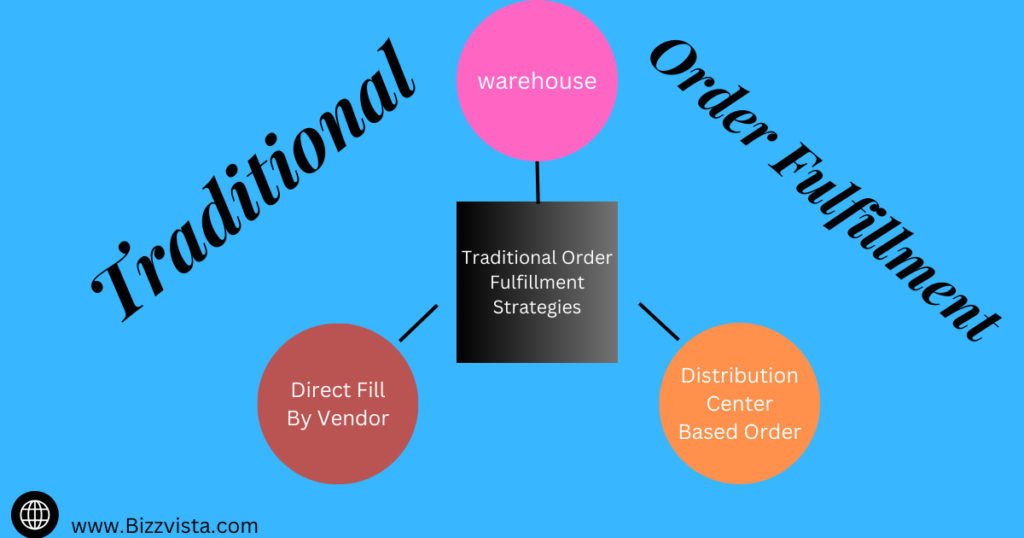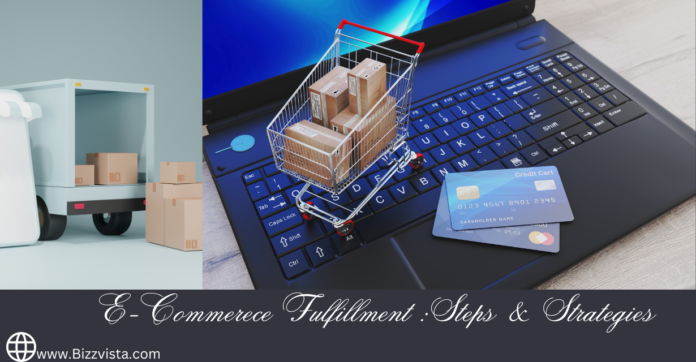For retailing, grasping the skill of e-commerce online fulfillment is a fundamental factor for succeeding. Because the paradigm has shifted to a digital e-commerce-marketing. This new era brought new demands within to meet assured delivery-systems including swift and convenient tools. Therefore, e-commerce business imperatives need its demands be fulfilled for safer and in more convenient manner. This article take into discussion the functionality, fulfillment and exploring various intricacies impaired with e-commerce fulfillment . Also it shed lights on the transformative shifts from traditional shopping, and the strategic approaches to optimize this critical supply chain process.
E-COMMERCE FULFILLMENT DEVELOPMENT

The beginning of e-commerce which emerged first with the revolution of the internet that generated the digitalization of commerce. E-commerce has greatly changed, whereby it revolutionized how customers engage and shop from brands. From fulfillment to order logistics, e-commerce has changed what was traditional and evolved in a way to meet the inevitable rise of online retail which pinpoints the customer’s order and completes the online buying process.
To elaborate, a traditional mail-based online version of e-commerce , that then quickly embraced both technological and logistical breakthroughs. The partnership with the couriers, the third-party logistics providers, and products developers gave a diverse fulfillment network architecture into existence. As e-business grew the need for ideal logistics in terms of efficiency, scalability, and customer-orientation services became an issue of priority.
Order fulfillment centers developed as the main distribution hubs; the place where customers’ online orders are processed, packaged and delivered. These centers grew in complexity incorporating the high level of computerization in them, which was done using AI, machine learning and real-time tracking to allow the efficient management of inventory, order processing and shipping. Nowadays e-commerce fulfillment is a highly complex web of e-commerce processes and logistics that seek excellence by satisfying the needs of the clients who shop online.
The new wave of e-commerce business replaced traditional shopping with an online shopping experience and resulted in a profound shift in the buyers’ behavior. First, e-commerce breakthrough was thanks to its ability to bring convenience, range and customization shopping experience that was not available to the customers when shopping in the brick and mortar stores. Through the e-commerce conversation shadowed itself around the spotlight when order fulfillment came to prominence. Order fulfillment, was and still is the silent engine of e-commerce dictating the speed and accuracy in which orders reach consumers.

The shopping experience in the era of brick and mortar stores was based on the fulfilment of the consumer’s instant gratification whims – the buyer enters the store, makes a selection, and leaves with the purchase. Electronic commerce sped up the interim characteristics of order fulfillment, since the buyers experienced that twilight zone between placing an order and receiving it. That cutting edge of e-commerce fulfillment assumed a crucial role in the hearts and minds of customers, making them loyal branded patrons of the e-retailers.
Now, e-commerce order fulfillment ranges starting from ensuring an easy return on investment for the businesses to deciding whether it is smart to outsource or keep the operations in-house, though that primarily depends on the scale and complexity of a business focalizing e-commerce fulfillment is evidence of a blend science with art, the techniques which include inventory management, order processing and shipping are mastered to create an inseparable good experience. The rounded trip from an offline shopping to an e-commerce not only has remarkably changed the process of purchase for all consumers, but also has significantly reconstituted the landscape of the logistics and supply chain, where e-commerce fulfillment has become an essential component of the successful application of online trading.
The e-commerce fulfillment environment, being as sophisticated as it is, focuses on every step with the ultimate assumption that every customer’s online journey becomes as reassuring and as elementary as in-store shopping. Each step is masterfully interlinked to make sure this is fast, accurate, and ultimately, fill the customer’s needs, from receiving the inventory to the management of returns. This is a step-by-step guide structured uniquely for e-commerce. The following is to show off the differences between e-commerce and traditional brick-and-mortar shops.
RECEIVING
In the realm of e-commerce, the receiving process initiates the fulfillment cycle. Unlike traditional retail, where products are delivered directly to stores for immediate shelving, e-commerce relies on a systematic receiving process to intake goods into fulfillment centers. Each item is inspected, inventoried, and stored, ready for order processing.
For example, Amazon’s fulfillment centers, sprawling complexes equipped with state-of-the-art technology, are orchestrated to receive and catalog millions of items, ensuring an efficient flow from suppliers to end consumers.
CUSTOMER SERVICE
INVENTORY SUPPLY AND STORAGE
In e-commerce, real-time tracking and accessibility, which are the typical attributes of dynamic technologies-based inventory storage, have been guaranteed as such. In physical stores, products are kept on shelves for shoppers to Browse and select. On the contrary, e-commerce facilities must implement efficient storage solutions to make picking and packing quick and easy, so that orders can be handled quickly.
IKEA’s automated storage systems exemplify this, where products are systematically stored and retrieved by automated systems, ensuring speed and accuracy in order fulfillment.
PROCESSING E-COMMERCE ORDERS
In e-commerce the order processing step is purely online e-mode and data is real time. In contrast to a typical store where shoppers hand-select goods, this process in e-commerce is carried out either by automatic systems or warehouse workers who prepare these orders and then warehouses them, ready to be delivered.
For example, Shopify provides order fulfillment process to automatically choose the products as sold and collect the suitable package and send it to customer, this action gives accuracy and
efficiency to achieve that standard in a short time that it sustains challenging in physical shops all over the world.
SHIPPING E-COMMERCE GOODS
Shipment represents the crucial element among the e-commerce operator’s success factors, directly depending on the customer satisfaction. By demonstrating the contrast between instant happiness of store purchases and supply chain efficiency of e-commerce, the shipment process that brings the product to the customer’s doorstep is discussed.
The electronic commerce customer service expands beyond the possibilities of physical store assistance, becoming an endless online support system. E-commerce platforms provide instant assistance, tracking and help both during the period of order placement and as well as after the delivery. In this process, the client is protected throughout.
Amazon employs the technology to humanize its products one such strategy is chatbot, which gives real-time solutions as a significant change of in-person support available in physical stores.(Chatbot – AI – real-time solutions – in-person support – physical stores)
MANAGING RETURNS

Returns management in e-commerce is a sophisticated process, necessitated by the absence of ‘try and buy’. E-commerce businesses invest in seamless return processes to enhance customer confidence.
ASOS’s free return policy and easy process contrast the often tedious return procedures in physical stores, marking e-commerce evolution in enhancing customer convenience.
RELYING ON SOFTWARE AND TECHNOLOGY
The seamless implementation of e-commerce relies on the integration of software into the fulfillment processes. Technology connects and unites all of the activities together. Their brick-and-mortar stores are run manually and their e-commerce site uses technology which works in real time order processing, inventory management, and support services.
The Shopify’s use of AI for personalized shopping sprees shows how technology plays a vital roll in e-commerce industry that is being incrementally help the conventional stores to step up the customer experience at the mall.
LOGISTICS OF E-COMMERCE FULFILLMENT STRATEGIES
Logistics serve as a pillar holding together the complex system of e-commerce warehousing which connects the customer’s order with final delivery by delivering goods backwards and forwards from the stores. Both location-centered choice of fulfillment centers, the incorporation of user-friendly digital solutions, and free of charge shipping are vital. While on the other hand, technology is important in improving workers’ efficiency by boosting accuracy and fulfill customers’ expectations as well as reducing general time-taking.
IN-HOUSE FULFILLMENT
In-house fulfillment gives e-commerce businesses direct control over the entire fulfillment process. While this model offers complete oversight of inventory management and customer orders, it also poses challenges. The need for extensive warehouse space, technology, and staff can escalate operational costs.
Yet, for businesses like Apple, the direct oversight ensures brand integrity and a personalized customer experience, balancing out the operational challenges.
THIRD-PARTY FULFILLMENT

However, relinquishing control can sometimes result in generic packaging and less brand personalization, a potential drawback for
businesses focusing on brand experience.
DROP SHIPPING FULFILLMENT
Drop shipping offers the appeal of minimal inventory handling. E-commerce businesses like Printfull rely on suppliers to ship directly to customers. This model reduces the need for inventory storage and management. On the other hand, it poses challenges in quality control and dependency on the supplier’s inventory management, impacting the ability to meet customer expectations regarding stock availability and shipping times.
HYBRID FULFILLMENT STRATEGIES
Different companies have adopted mixed strategies to outperform the situation where they solely depend on in-house solutions and the ones of third party providers. This model provides simultaneously with independence of the in-house fulfillment and financial and technical support of third-party logistics.
Integrating all these extends the requirements for software as sophisticated and state-of-the-art business operation efficiency, and coordination becomes crucial.
.
E-COMMERCE FULFILLMENT CHALLENGES
Navigating the landscape of e-commerce fulfillment is rife with challenges. But it also proficiently can be tackled through various strategies. In the following table some of these challenges and solutions are given.
| Challenges | Solutions |
| Untrained staff can bottleneck the fulfillment process | Robust training programs |
| Excessive volume requests | Technology integration |
| Strain resources | Strategic partnerships with fulfillment providers that value brand integrity |
| Branding issues( when e-commerce stores outsource fulfillment, potentially diluting the personalized customer experience) |
.
FOLLOW BY EXAMPLE: BEST FULFILLMENT SERVICES
In the vibrant world of e-commerce, here are a couple of prime examples when it comes to fulfillment services.
AMAZON
The customer-centric approach taken by Amazon makes its e-commerce fulfillment the real gold standard to refer to. Amazon, being a global prodigy, has intricate networks of fulfillment centers that enhance a swift delivery and affordable shipping charges worldwide. The company has the straightforward return policy supported after sales customer support system as its way to reassure the customer satisfaction.
SHOPIFY
Alongside Amazon, Shopify is also something of a beacon in the fulfillment arena with its focus on merchants. Automated e-commerce fulfillment network by Shopify is agile enough to incorporate technology across the supply chain. Such technological integrations as real time inventory management and tracking are possible.The platform provides businesses access to multiple locations without the operational headache, ensuring that e-commerce businesses can focus on growth while Shopify handles the logistics intricacies.
In the vibrant world of e-commerce, these fulfillment giants epitomize the balance between operational efficiency, cost-effectiveness, and impeccable customer service. They illustrate that the cornerstone of successful e-commerce fulfillment lies in a seamless integration of technology, strategic logistics, and an unwavering focus on customer expectations and satisfaction.
QUALIFICATIONS TO AIM FOR WHEN CHOOSING A RELIABLE FULFILLMENT PROVIDER
When selecting a fulfillment provider, businesses should focus on:
Relatable Industry Experience: A provider with experience in your business niche understands your specific challenges and customer expectations.
Client Base: Providers serving diverse and extensive clients are typically more reliable and tested.
Cost Effectiveness: Evaluate if the cost aligns with the quality of service; neither cheap nor expensive guarantees quality.
Current Technology: Look for providers with up-to-date technology for efficient order processing and data management.
Data and Analytics: The ability to provide actionable insights can optimize inventory and improve customer satisfaction.
Versatility: A provider should be adaptable to your business needs and market dynamics.
Customer Service Approach: Effective communication and support are vital for resolving issues promptly.
SWITCHING FULFILLMENT PROVIDERS
Indicators that you may need to switch providers include:
Cyclical Sales Issues: If your provider struggles during peak sales periods, it’s a red flag.
Unsatisfactory Service:When business and consumer needs are not met, consider alternatives.
Poor Infrastructure: Inadequate facilities can lead to delays and errors in order fulfillment.
Outdated Technology: Modern, efficient technology is crucial for optimal e-commerce fulfillment.
MISLEADING INFORMATION ABOUT E-COMMERCE FULFILLMENT
Contrary to some misconceptions, e-commerce fulfillment isn’t just about shipping products. It encompasses an intricate process involving inventory management, order processing, and customer service, each requiring a tailored approach to effectively meet specific business needs and customer expectations.
Final thought
Wisely crafting the complex landscape of e-commerce fulfillment requires a strategic approach encompassing well-defined steps and logistics strategies. By understanding the intricacies of order processing, inventory management, and efficient shipping, businesses can optimize their operations for customer satisfaction and sustained growth in the competitive online market. Successful E-Commerce Fulfillment hinges on a seamless integration of technology, robust logistics solutions, and a customer-centric mindset, ultimately shaping a path towards operational excellence and long-term success in the dynamic world of online commerce.




